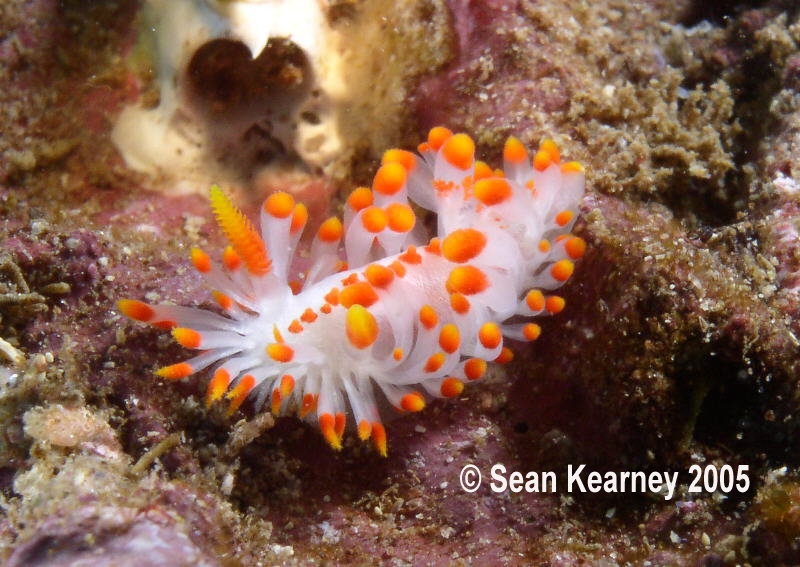 |
Limacia cockerelli
Photo taken at Coronados Islands (off San Diego)Photo courtesy of Sean Kearney
Limacia cockerelli
Previously named Laila cockerelli, with the common name moniker of, Cockerellís Dorid, the species was named to honor Theodore Dru Allison Cockerell. Born in England in 1866, Cockerell first came to the United States in 1887 to cure a mild case of tuberculosis. He served as Director of the Museum of Jamaica and professor at the New Mexico Agricultural College (now New Mexico State University, Las Cruces). Dr. Cockerell then moved to Boulder, Colorado to stay when his wife was appointed to the teaching staff of Boulder High School. Dr. Cockerell joined the faculty of the University of Colorado in 1904 where he taught entomology and zoology for 42 years.
Considered by many to be the world's expert on bees, Theodore Cockerell catalogued more than 900 species of bees in Colorado alone. His interests were not limited to entomology. Cockerell was a well-rounded naturalist in the truest sense of the word. He hunted fossils at the Florissant fossil beds, authored Zoology of Colorado, supported women's rights, and published extensively on science and social issues. Theo Cockerell was a key figure in the introduction of Darwinian theory to American science.
Limacia cockerelli has long dorsal papillae may obscure the branchial plume causing it to be mistaken for an aeolid. The ground color is white. You can see the lamellate rhinophores perfectly in Seanís photo above. They are red-orange and the branchial plumes are white. In some specimens, the dorsum bears numerous, randomly spaced, low tubercles, those along the midline being tipped in white . In others the tubercles are taller, forming a single row down the dorsum and tipped randomly in red-orange . T he longer papillations, restricted to the edges of the dorsum, are white, tipped with yellow or orange. third variation has large red blotches on the dorsum. The marginal papillae are red. Specimens reach 26 mm in length. In Seanís excellent photo you can also see the matrix of siliceous spicules in the skin of the notal surface.
This species feeds on the bryozoans Hincksina and Membranopora. The current geographical range is Johnston Strait, Alaska (N. McDaniel, pers. comm.) to Cabo San Lucas, Baja California Sur, México.
One of the most interesting behaviors of this species is the way it "jerks" its dorsal papillae. It is hypothesized that this behavior enhances the animalís respiration, the papillae absorbing oxygen from the seawater, supplementing that of the dorsal gill rosette.
Danville, Calif
Jan. 2005

Jan. 2005
Send Sean mail at skearney@dc.rr.com |
Taxonomic information courtesy of:

David W. Behrens
Author:
Pacific Coast Nudibranchs
Send Dave mail at dave@seachallengers.com
|
